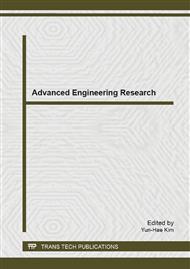p.1386
p.1393
p.1397
p.1401
p.1405
p.1412
p.1418
p.1424
p.1428
Development of Computerize Value Stream System
Abstract:
Value stream mapping (VSM) was initially developed to use of the suite of tools to help researcher or practitioner to identify waste in individual value streams and find an appropriate method to its removal. The process itself is simple and straightforward is used to identify waste using lean manufacturing technique, determined causes of the waste through the value stream mapping method and to propose solution to improve workplace environment. In this project is made an attempt to computerize the process though the application of VSM. Computerize value stream system is basically a method which is an internet networking system combining traditional concept of value stream mapping method to be used at manufacturing company to reduce wastes. This paper summarizes the way to develop an internet, online and network based of an efficient computerize value stream system to improve operation value of the manufacturing company. This paper reviews the design of package that will replace the manual method of doing VSM. This package will be applied in a real shop floor environment.
Info:
Periodical:
Pages:
1405-1411
Citation:
Online since:
April 2014
Authors:
Price:
Сopyright:
© 2014 Trans Tech Publications Ltd. All Rights Reserved
Share:
Citation:


